
1542 Results

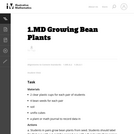
This is a task from the Illustrative Mathematics website that is one part of a complete illustration of the standard to which it is aligned. Each task has at least one solution and some commentary that addresses important asects of the task and its potential use. Here are the first few lines of the commentary for this task: Materials - 2 clear plastic cups for each pair of students - 4 bean seeds for each pair - soil - unifix cubes - a plant or math journal to record data ...
- Subject:
- Mathematics
- Material Type:
- Activity/Lab
- Provider:
- Illustrative Mathematics
- Provider Set:
- Illustrative Mathematics
- Author:
- Illustrative Mathematics
- Date Added:
- 04/17/2013

This comprehensive Open Source lesson plan is designed for Kindergarten through Middle School level students to learn about life cycles, plants needs, and plant structures & their functions through hands-on investigations with Wisconsin Fast Plants. Depending on the grade level, students engage at an appropriate depth with developing models and constructing arguments that plants have internal and external structures that function to support survival, growth, behavior, and reproduction. This lesson is available as a Google Doc in the Gather, Reason, Communicate instructional model. You may copy the lesson Doc to your own Drive and edit/adapt for your own use--it is shared by the Fast Plants Program as an Open Education Resource" therefore, you are free to use and adapt for noncommercial purposes, provided you attribute the Wisconsin Fast Plants Programs website (www.fastplants.org) as your source and share openly (for noncommercial purposes) any materials you develop with ours.
- Subject:
- Botany
- Life Science
- Material Type:
- Lesson Plan
- Unit of Study
- Provider:
- Wisconsin Fast Plants Program
- Author:
- Hedi Baxter Lauffer
- Date Added:
- 05/25/2023
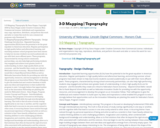
3-D Mapping | Topography
By Dana Hoppe, Copyright 2018 by Dana Hoppe under Creative Commons Non-Commercial License. Individuals and organizations may copy, reproduce, distribute, and perform this work and alter or remix this work for non-commercial purposes only.
Download: 3-D_MappingTopography.pdfDelete
Topography - Design Challenge
Introduction - Expanded learning opportunities (ELOs) have the potential to be the great equalizer in American education. Regular participation in high quality before and afterschool learning, and enriching summer school programs have been shown to help low-income students succeed academically on par with their more affluent peers. These programs, characterized by strong school-community partnerships, can also help high-performing students stay engaged and achieve even greater levels of understanding. In short, high-quality ELOs are for everyone - and the benefits they create are critical to Nebraska's future economy. - Beyond School Bells I would like to thank Beyond School Bells as well as Nebraska Innovation Studio for providing me with the opportunity, resources, and encouragement to develop this program as an Innovation Fellow. Their willingness to give the intellectual and creative freedom to build upon my ideas and inspirations is what enabled this program to exist. I strongly believe that opportunities such as the Innovation Fellowship are planting the seeds for Nebraska's future. -Dana Hoppe, Program Creator
Concept and Purpose - Interdisciplinary Learning: This program is focused on developing fundamental STEM skills through interdisciplinary learning. The truth is that all areas of study overlap significantly in one way or another, and the cognitive skills that lead to success in one area surely extend to other areas. A recurring theme I have noticed through my personal experience of being and artist as well as a scientist is that I have heavily utilized my creative thinking abilities to solve challenging problems. Imagination and creativity, when combined with background knowledge and understanding, allow us to find solutions that often lie beyond the rigid structure often associated with mathematics and the sciences. Once we begin to see the overlap between these areas, we begin building bridges between them and new ideas and applications emerge from a formerly empty space. The concept of topography was always interesting to me. The strangeness of being able to discern the shape of the land simply from the distance between a hypnotizing assortment of lines on a flat piece of paper was immediately intriguing. How does this flat sheet of abstract shapes translate to the three-dimensional complexity of a mountain, a valley, or a bluff? Topography is the platform of this program because it is a very versatile concept and can be used to create art and models representing a diverse range of fields. The activities in this program focus on having the students follow processes often found in Computer Science. Every process they complete can be thought of as an algorithm, and when they repeat steps, it can be thought of as a loop. They are also recursively calling the same function on each resulting piece they create, mimicking the concept of dynamic programing. The permutation matrix activities will familiarize students with moving through the data in a matrix and adding data to stacks. While they are doing all of these activities, however, there will be no jargon they have to learn, and they will probably not even realize until they take their first Computer Science course that it is even related. To the students, they will simply be creating art in a new and interesting way.
- Subject:
- Education
- Material Type:
- Activity/Lab
- Lesson
- Lesson Plan
- Date Added:
- 08/10/2019
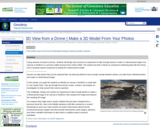
Using cameras mounted to drones, students will design and construct an experiment to take enough photos to make a 3-dimensional image of an outcrop or landform in a process called structure from motion (SfM). This activity has both a hands-on component (collecting data with the drone) and a computer-based component (creating the 3-dimensional model).___________________Drones can take photos that can be analyzed later. By planning ahead to have enough overlap between photos, you take those individual photos and make a 3-dimensional image!In this activity, you guide the students to identify an outcrop or landform to study later or over repeat visits. They go through the process to plan, conduct, and analyze an investigation to help answer their science question.The Challenge: Design and conduct an experiment to take enough photos to make a 3-dimensional image of an outcrop or landform, then analyze the image and interpret the resulting 3-d image.For instance they might wish to study a hillside that has been changed from a previous forest fire. How is the hillside starting to shift after rainstorms or snows? Monitoring an area over many months can lead to discoveries about how the erosional processes happen and also provide homeowners, park rangers, planners, and others valuable information to take action to stabilize areas to prevent landslides.
(Note: this resource was added to OER Commons as part of a batch upload of over 2,200 records. If you notice an issue with the quality of the metadata, please let us know by using the 'report' button and we will flag it for consideration.)
- Subject:
- Biology
- Life Science
- Mathematics
- Measurement and Data
- Statistics and Probability
- Material Type:
- Activity/Lab
- Provider:
- Science Education Resource Center (SERC) at Carleton College
- Provider Set:
- Teach the Earth
- Author:
- Shelley Olds
- Date Added:
- 08/27/2022

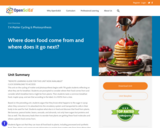
Students figure out that they can trace all food back to plants, including processed and synthetic food. They obtain and communicate information to explain how matter gets from living things that have died back into the system through processes done by decomposers. Students finally explain that the pieces of their food are constantly recycled between living and nonliving parts of a system.
- Subject:
- Life Science
- Physical Science
- Material Type:
- Lesson
- Lesson Plan
- Module
- Teaching/Learning Strategy
- Unit of Study
- Provider:
- OpenSciEd
- Author:
- OpenSciEd
- Date Added:
- 09/16/2020
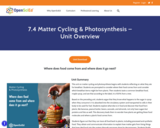
This unit on matter cycling and photosynthesis begins with students reflecting on what they ate for breakfast. Students are prompted to consider where their food comes from and consider which breakfast items might be from plants. Then students taste a common breakfast food, maple syrup, and see that according to the label, it is 100% from a tree.
Based on the preceding unit, students argue that they know what happens to the sugar in syrup when they consume it. It is absorbed into the circulatory system and transported to cells in their body to be used for fuel. Students explore what else is in food and discover that food from plants, like bananas, peanut butter, beans, avocado, and almonds, not only have sugars but proteins and fats as well. This discovery leads them to wonder how plants are getting these food molecules and where a plant’s food comes from.
- Subject:
- Biology
- Life Science
- Material Type:
- Unit of Study
- Provider:
- OpenSciEd
- Date Added:
- 02/26/2020
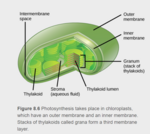
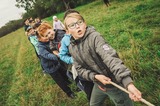
This course aims to increase understanding and knowledge of our food and fiber system, giving a starting point for students to explore pathways and occupations related to the agriculture industry, and gain hands-on experience learning basic agricultural practices. This curriculum, designed for eighth-graders, is intended to be student-led and inquiry-based. Written by Emma Sunderman; Ice Cream in a Bag Lesson Plan by Caleb tenBensel; other activities developed and curated by Nebraska AFNR educators
- Subject:
- Agriculture
- Material Type:
- Activity/Lab
- Assessment
- Full Course
- Homework/Assignment
- Lecture
- Lesson
- Lesson Plan
- Student Guide
- Syllabus
- Author:
- Owl Nest Manager
- Date Added:
- 01/26/2024
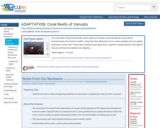
The coral reefs of the South Pacific island nation of Vanuatu are the backbone of the island's environmental and economic health. Today they face destruction from a silent predator that can rapidly decimate an entire reef. In this video, students learn about how a starfish is destroying the coral reefs of Vanuatu and how the islanders are adapting.
- Subject:
- Applied Science
- Biology
- Career and Technical Education
- Ecology
- Economics
- Environmental Science
- Environmental Studies
- Life Science
- Physical Science
- Social Science
- Material Type:
- Diagram/Illustration
- Reading
- Provider:
- CLEAN: Climate Literacy and Energy Awareness Network
- Provider Set:
- CLEAN: Climate Literacy and Energy Awareness Network
- Author:
- LearningMedia
- Public Broadcasting Service
- Date Added:
- 08/01/2022
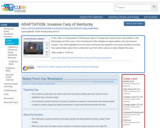
In this video, an entrepreneur is finding new ways to manage the invasive Asian carp problem in the Mississippi and Ohio rivers. Once introduced to help mitigate an algae problem, the carp became invasive. This video highlights how the local community has adapted to the issue, including how they have gained ideas about how to utilize the carp from other cultures to help mitigate the issue.
- Subject:
- Applied Science
- Biology
- Career and Technical Education
- Ecology
- Economics
- Environmental Science
- Environmental Studies
- Life Science
- Physical Science
- Social Science
- Material Type:
- Diagram/Illustration
- Reading
- Provider:
- CLEAN: Climate Literacy and Energy Awareness Network
- Provider Set:
- CLEAN: Climate Literacy and Energy Awareness Network
- Author:
- LearningMedia
- Public Broadcasting Service
- Date Added:
- 08/01/2022
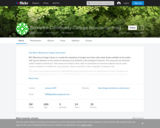
BCC Bioscience Image Library is a media file repository of images and video clips made freely available to the public, with special attention to the needs of educators and students in the biological sciences. The resources are licensed under Creative Commons 0. This means all content is free, with no restrictions on how the material may be used, reused, adapted or modified for any purposes, without restriction under copyright or database law.
This project was partially funded by a $20,000,000 grant awarded by the U.S. Department of Labor’s Employment and Training Administration, Grant # TC-26450-14-60-A-25. The product was created by the grantee and does not necessarily reflect the official position of the U.S. Department of Labor. The U.S. Department of Labor makes no guarantees, warranties, or assurances of any kind, express or implied, with respect to such information, including any information on linked sites and including, but not limited to, accuracy of the information or its completeness, timeliness, usefulness, adequacy, continued availability, or ownership.
If you have any questions contact professor Faye Reynolds at: bioimagesoer@gmail.com
- Subject:
- Education
- Life Science
- Material Type:
- Diagram/Illustration
- Lesson
- Module
- Author:
- Fayette A. Reynolds M.S.
- Date Added:
- 07/11/2022
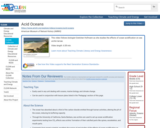
This video follows biologist Gretchen Hofmann as she studies the effects of ocean acidification on sea urchin larvae.
- Subject:
- Applied Science
- Biology
- Career and Technical Education
- Ecology
- Environmental Science
- Environmental Studies
- Life Science
- Physical Science
- Provider:
- CLEAN: Climate Literacy and Energy Awareness Network
- Provider Set:
- CLEAN: Climate Literacy and Energy Awareness Network
- Author:
- American Museum of Natural History (AMNH)
- Date Added:
- 08/17/2018
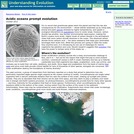
It's no secret that greenhouse gases warm the planet and that this has dire consequences for the environment whole islands swallowed up by rising seas, animal and plant species stressed by higher temperatures, and upsets in ecological interactions as populations move to cooler areas. However, carbon dioxide has another, less familiar environmental repercussion: making the Earth's oceans more acidic. Higher levels of carbon dioxide in the atmosphere mean that more carbon dioxide dissolves in the ocean. This dissolved carbon dioxide forms carbonic acid the same substance that helps give carbonated beverages their acidic kick. While this process isn't going to make the ocean fizzy anytime soon, it is introducing its own set of challenges for marine organisms like plankton and coral.
- Subject:
- Biology
- Life Science
- Material Type:
- Diagram/Illustration
- Reading
- Provider:
- University of California Museum of Paleontology
- Provider Set:
- Understanding Evolution
- Date Added:
- 10/01/2012

This resource is a video abstract of a research paper created by Research Square on behalf of its authors. It provides a synopsis that's easy to understand, and can be used to introduce the topics it covers to students, researchers, and the general public. The video's transcript is also provided in full, with a portion provided below for preview:
"Actinobacteria are some of the most widely distributed bacteria in soils and are well known for their ability to degrade plant residues in pure culture in the laboratory. Yet, despite the importance of microbe-driven decomposition to carbon sequestration in terrestrial systems, their importance and specific activity across diverse environments in the field are unknown. Researchers recently evaluated the ecophysiological roles of Actinobacteria in rice straw residue decomposition in a series of field and microcosm experiments. They found that although Actinobacteria represented only 4.6% of the total bacterial abundance, they encoded 16% of the total carbohydrate-active enzymes (CAZymes) involved in the breakdown of carbohydrates. The researchers also found that Actinobacteria taxonomic and functional compositions were relatively stable during straw decomposition and that the importance of Actinobacteria in decomposition increased as soil fertility decreased..."
The rest of the transcript, along with a link to the research itself, is available on the resource itself.
- Subject:
- Biology
- Life Science
- Material Type:
- Diagram/Illustration
- Reading
- Provider:
- Research Square
- Provider Set:
- Video Bytes
- Date Added:
- 10/14/2021

This resource is a video abstract of a research paper created by Research Square on behalf of its authors. It provides a synopsis that's easy to understand, and can be used to introduce the topics it covers to students, researchers, and the general public. The video's transcript is also provided in full, with a portion provided below for preview:
"Humans rely on microbial communities in both natural and applied settings. One such applied setting is wastewater treatment plants, which use microbial communities to remove pollutants. However, the stability of the taxonomic diversity in these settings is not well understood. To close this gap, researchers examined how the microbial community in activated sludge changed over time in a full-scale wastewater treatment plant. For the first 3 years of a 9-year series, the microbial community fluctuated around a stable average. Then a bleaching event, marked in red under the timeline, abruptly pushed the community to an alternative stable state, where the originally dominant Actinobacteriota were disproportionally depleted and replaced with Proteobacteria, but these taxonomic changes led to little change in either the metabolic profile of the community or system performance. In a fine-scale analysis of dynamics, the researchers identified cohorts that dominated at different periods..."
The rest of the transcript, along with a link to the research itself, is available on the resource itself.
- Subject:
- Biology
- Life Science
- Material Type:
- Diagram/Illustration
- Reading
- Provider:
- Research Square
- Provider Set:
- Video Bytes
- Date Added:
- 10/13/2021
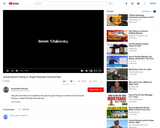
For the Principles of Accounting: Volume 2 Managerial Accounting, this video focuses on Chapter 6 (Activity Based Costing) using the Musicality, Inc. problem, exploring the calculations differences between Single Plantwide Overhead rate vs. Activity Based Costing. Covering the cost per unit / gross profit per unit only.
- Subject:
- Accounting
- Business and Communication
- Material Type:
- Lecture Notes
- Author:
- Dixon Cooper
- Mitchell Franklin
- Patty Graybeal
- Rice University
- Bennet Tchaikovsky
- Date Added:
- 03/03/2019
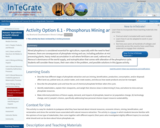
Mined phosphorus is considered essential for agriculture, especially with the need to feed the ever growing population. However, there are consequences of phosphate mining and use, including pollution at mine sites and fertilizer processing plants, heavy metal accumulation in soil where fertilizers are used, national security issues intertwined with Morocco's dominance of the world supply, and eutrophication that comes with alteration of the phosphorus cycle. Students will consider these issues, their own roles in the problem, and possible solutions in this jigsaw activity.
(Note: this resource was added to OER Commons as part of a batch upload of over 2,200 records. If you notice an issue with the quality of the metadata, please let us know by using the 'report' button and we will flag it for consideration.)
- Subject:
- Biology
- Career and Technical Education
- Environmental Studies
- Geology
- Life Science
- Physical Science
- Material Type:
- Activity/Lab
- Provider:
- Science Education Resource Center (SERC) at Carleton College
- Provider Set:
- Teach the Earth
- Author:
- Joy Branlund
- Date Added:
- 12/01/2021
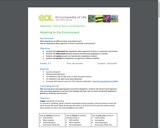
After learning about and exploring plant and animal adaptations, students research local organisms with interesting adaptations and share findings with their classmates. Students identify adaptations globally by analyzing a documentary.
Educators Guide for this unit:
http://education.eol.org/lesson_plans/2-5_Adaptations_LessonOverview.pdf
Lessons in this unit:
Adaptations Activity 1: Adapting to the Environment
Adaptations Activity 2: Physical Adaptations
Adaptations Activity 3: Behavioral Adaptations
Adaptations Activity 4: Go Adapt!
Adaptations Activity 5: Create a Creature
- Subject:
- Life Science
- Material Type:
- Activity/Lab
- Author:
- Encyclopedia of Life
- Date Added:
- 11/20/2017